Since I’ve been teaching more and more night photography the last few years, people sometimes ask, “why don’t you do a trip that’s ALL night photography?” Other than the fact that I do enjoy getting some sleep, when I’m somewhere beautiful I want to take advantage of day time as well as night time. The Moab trip I run each year is a great example of that.
Nestled between Arches and Canyonlands National Parks, Moab is in a prime location for classic southwestern photography and has plenty of lodging and dining options. Better yet, by November the crowds have died down, and sunrise is around 7am, sunset 5pm. That means you can go out and have some great shoots during the day, then work into night and still have dinner before it gets late. To me, that’s a win-win.
As usual, I’d rather let the photos tell the story, so here are some of the places we visited during our four-day photo trip to Moab this past November.
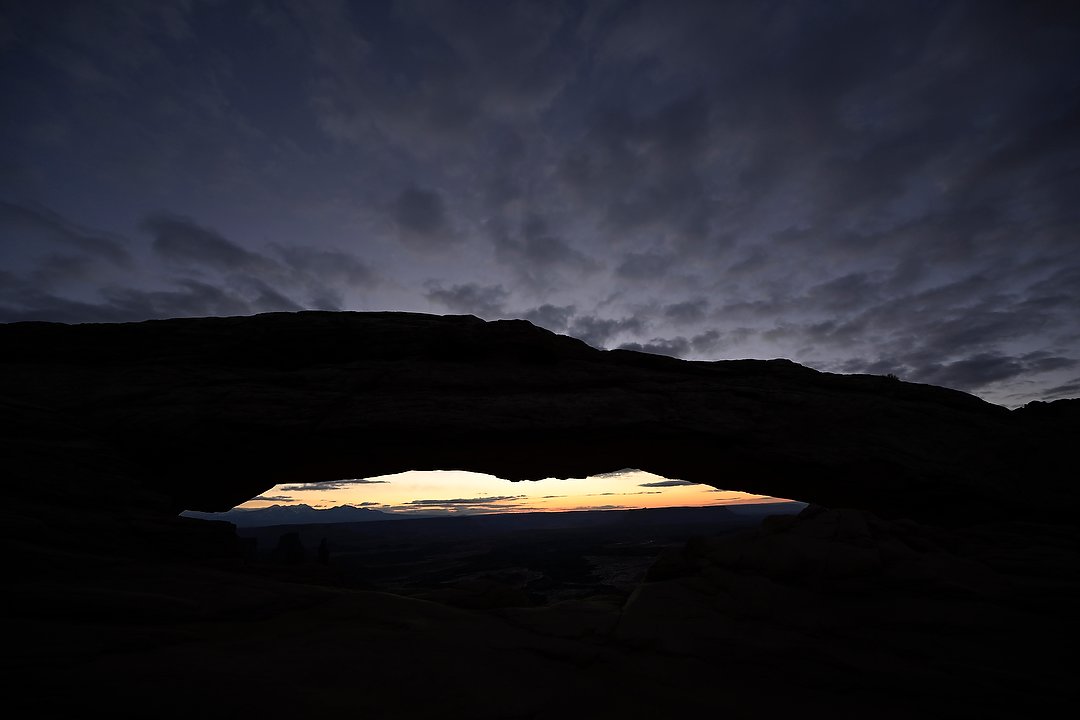
This is Mesa Arch, which is probably the most visited sunrise location in Canyonlands National Park. However, I’ve learned over the years that the sunrise photo from this spot is actually not the best photo to be made there.
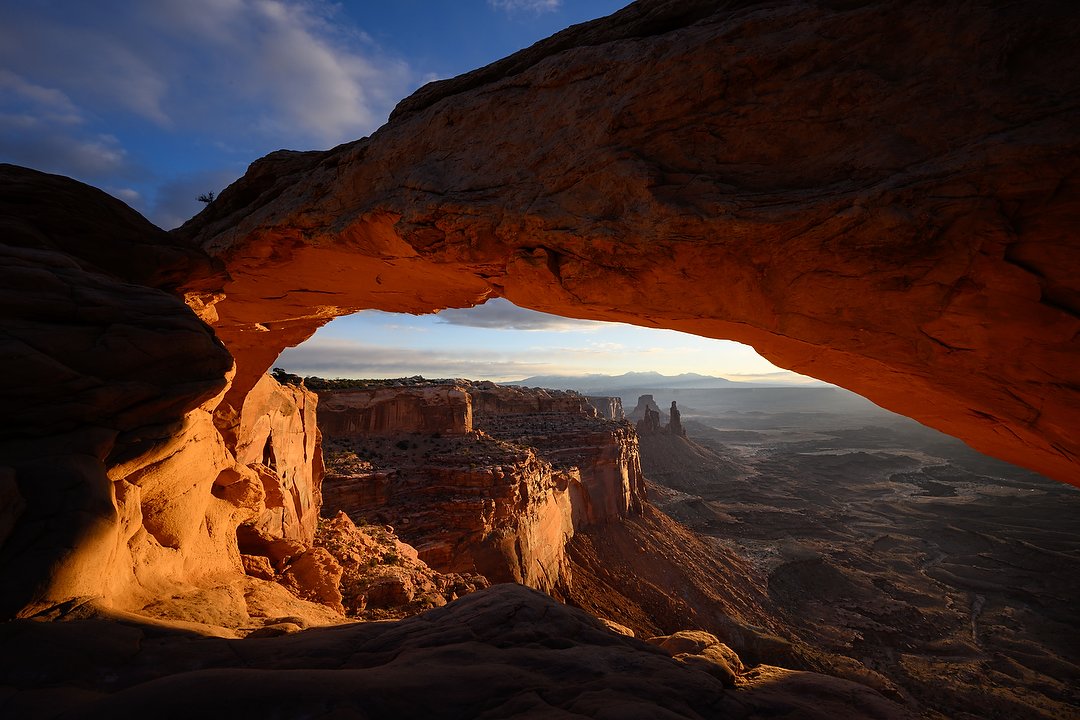
This is better, and can be made after sunrise, which is also when most of the other photographers have left. Fine by me, as it makes it easier for my group to get the picture. Oh, and you don’t need to haul a tripod in since there’s plenty of light by then. The photo at the top of this story is from that same morning, same arch, just the other side. Nikon Z 9, Aperture Priority, Natural Auto white balance, ISO 100, 1/40 at f/16 in Matrix metering, 0.0 EV, Nikkor Z 14-30mm f/4 S lens at 14mm.
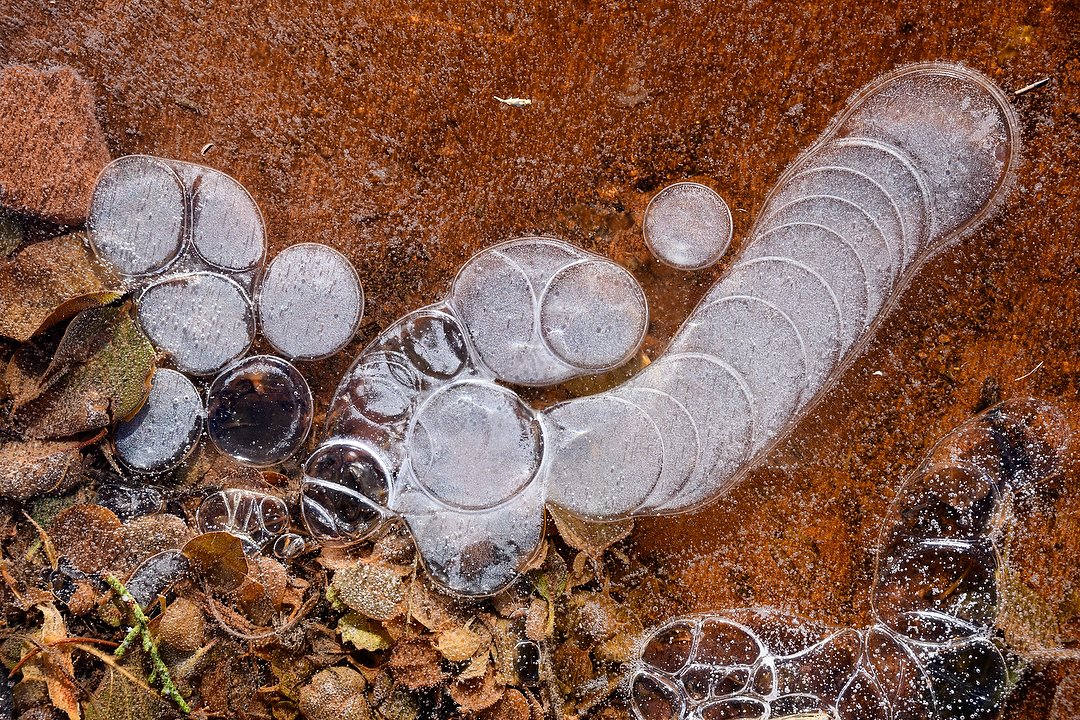
We also visited Green River Overlook that morning, and if there’s been any rain the previous few days, you can usually find some nice ice pictures. Nikon Z 9, Aperture Priority, Natural Auto white balance, ISO 100, 1/100 at f/8 in Matrix metering, +0.3 EV, Nikkor Z 24-200mm f/4-6.3 VR lens at 110mm.
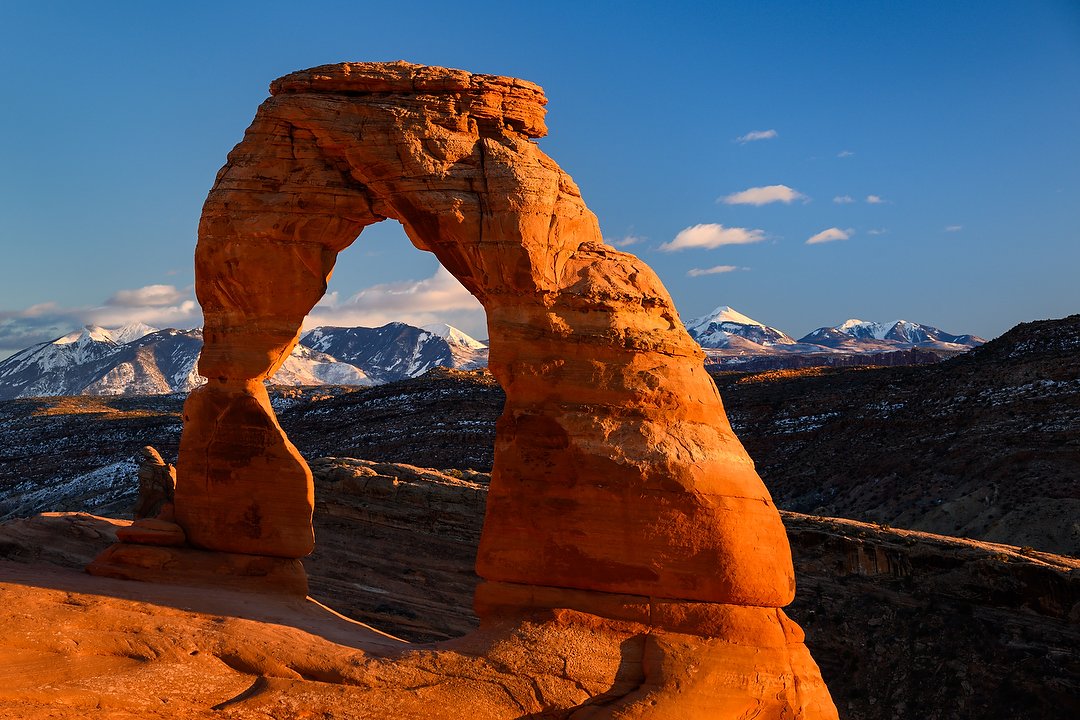
Delicate Rock is perhaps the most photographed and beautiful arch in Utah (and why it’s on their license plate). The 1.5 mile hike there, mostly uphill, feels much longer, so we started mid-afternoon. But it’s far better than doing the hike during the heat and crowds of summer! And in Novmeber you’ve a good chance of having snow on the mountains behind it. A polarizing filter was the final touch, helping the clouds “pop” against the blue sky. Nikon Z 9, Aperture Priority, Sunny white balance, ISO 160, 1/25 at f/8 in Matrix metering, -1.0 EV, Nikkor Z 24-200mm f/4-6.3 VR lens at 69mm.
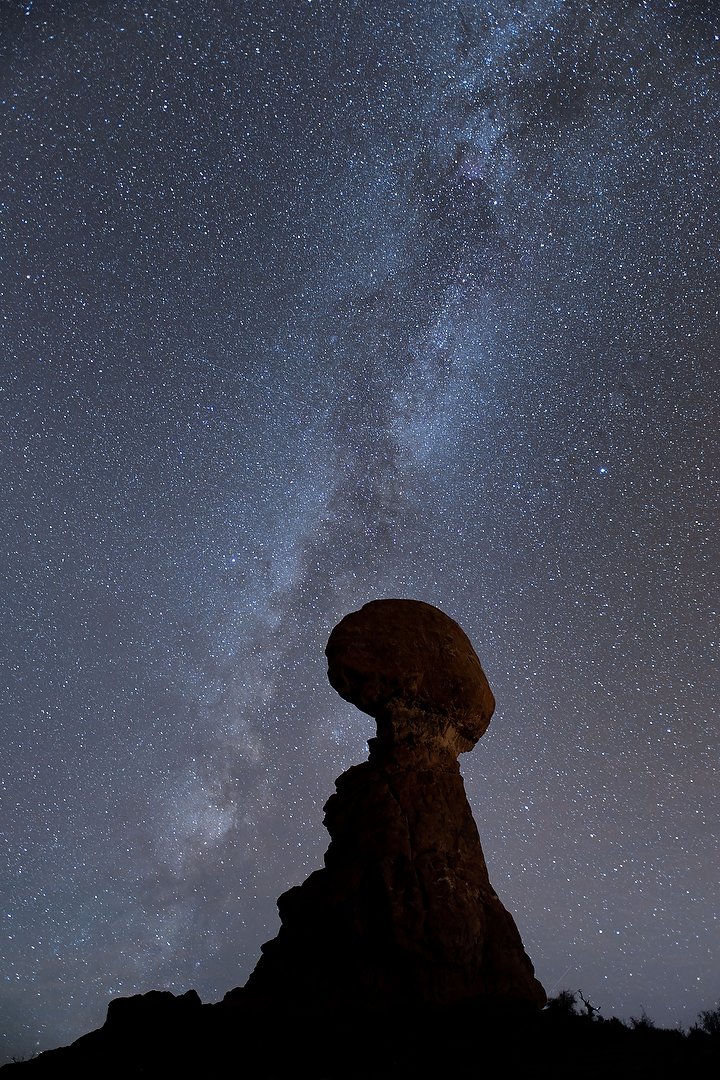
Sunset around 5pm means we can easily do night shoots every evening. This is Balanced Rock, which we scouted earlier in the day so knew just where to go to get the Milky Way in the photo. And it was an easy stop on our way back to Moab from Delicate Arch. Not a bad way to finish the first day, and we were still back in town for dinner by 8pm. Nikon Z 9, Manual exposure, 3700K white balance, ISO 4000, 25-seconds at f/1.8, Nikkor 20mm f/1.8G lens.
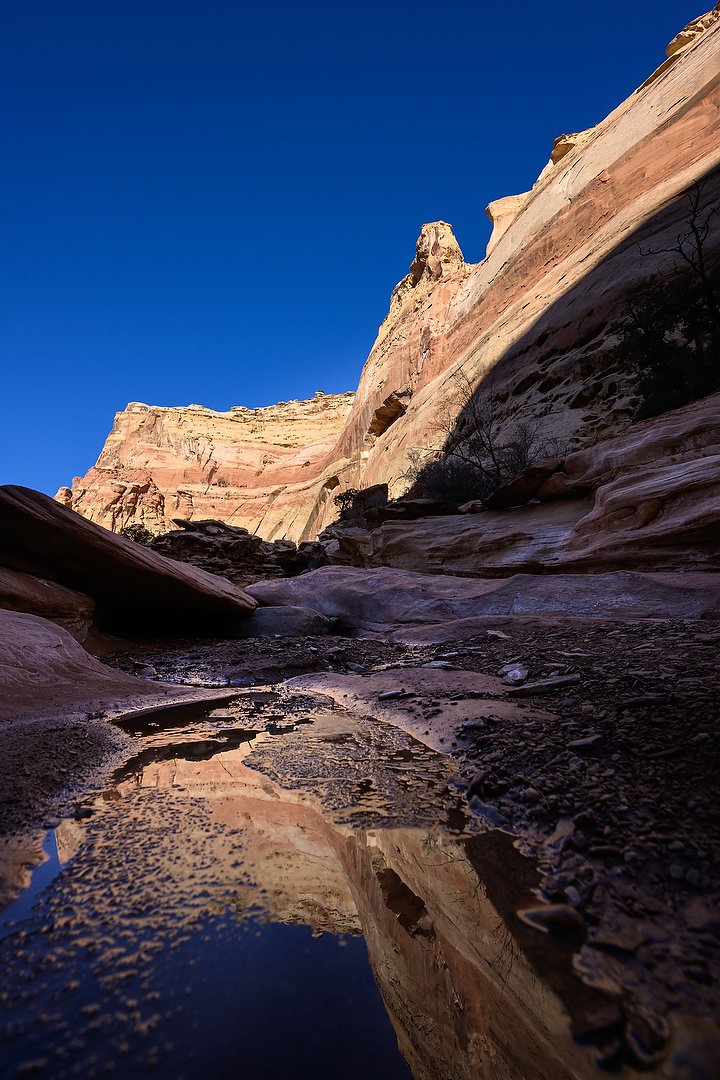
My assistant, Jim, discovered Crack Canyon on a trip to Utah a few years ago. If you don’t want to make a long hike to get there (and who does?), you need a high-clearance four-wheel-drive vehicle. Jim’s got one, so he made two trips to shuttle our entire group in. Nikon Z 9, Aperture Priority, Sunny white balance, ISO 200, 1/400 at f/8 in Matrix metering, -0.7 EV, Nikkor Z 14-30mm f/4 S lens at 15mm.
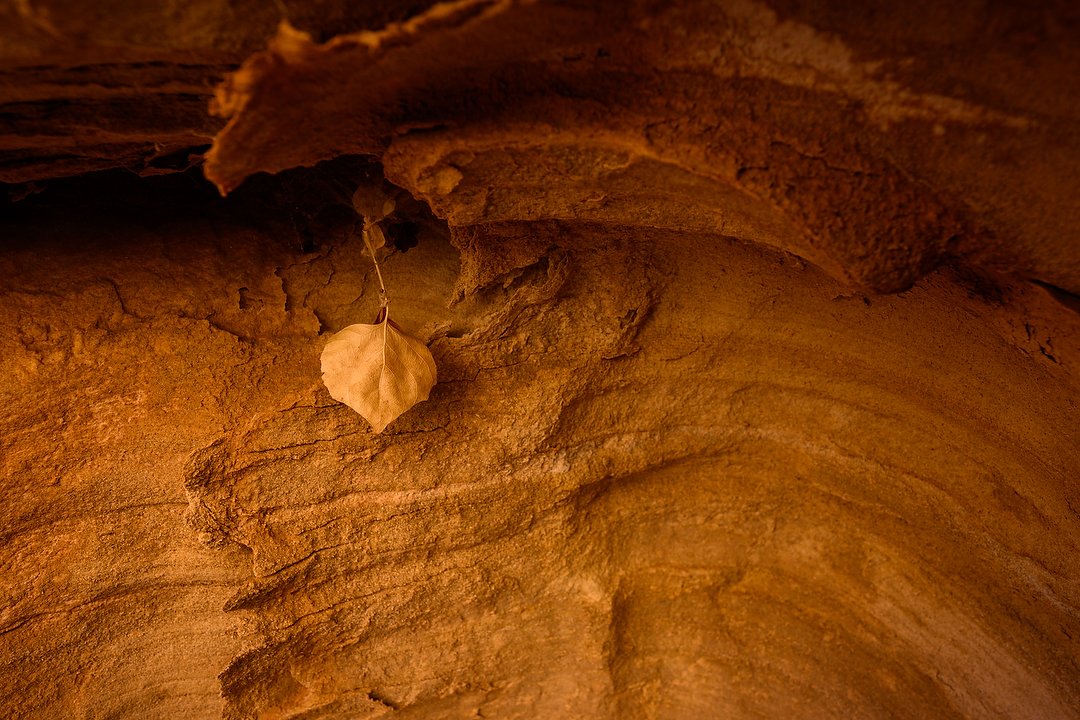
I always remind my group to watch for the little things, those details that can also be nice. Like this leaf tucked into a crack in some sandstone in, appropriately, Crack Canyon. Nikon Z 9, Aperture Priority, Sunny white balance, ISO 320, 1/60 at f/7.1 in Matrix metering, -0.7 EV, Nikkor Z 14-30mm f/4 S lens at 19mm.
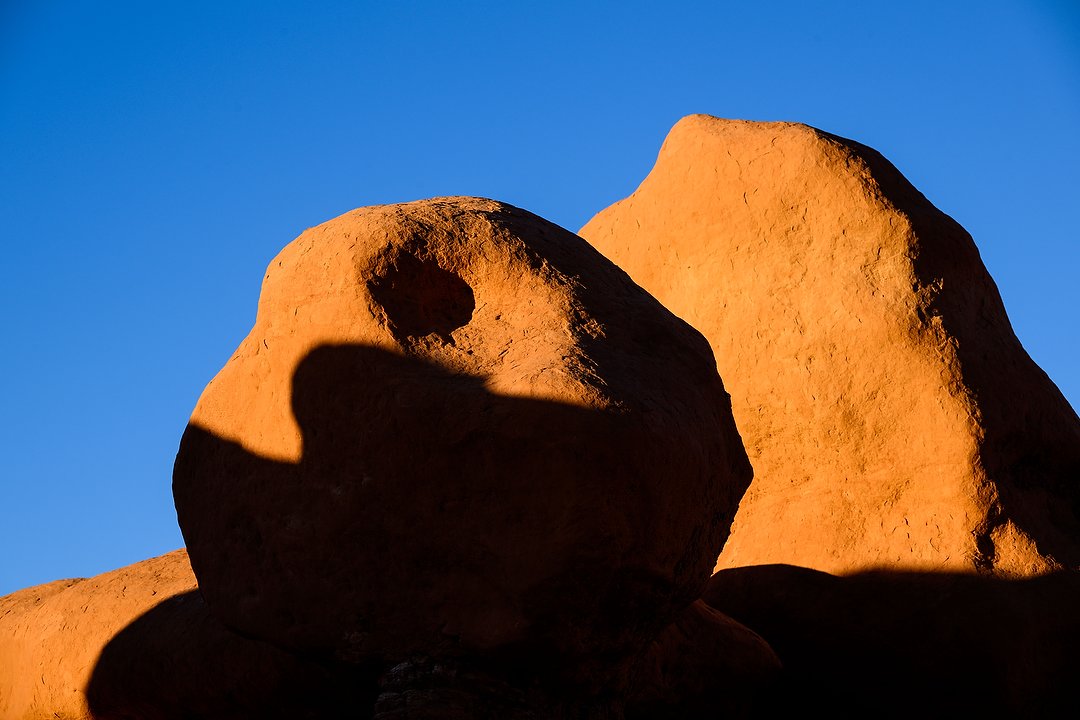
After Crack Canyon, we made the short drive over to nearby Goblin Valley State Park to shoot through sunset. I told the group to watch for the interplay of light and shadows, and the orange rock against blue sky, like this. Nikon Z 9, Aperture Priority, Sunny white balance, ISO 125, 1/125 at f/10 in Matrix metering, -0.7 EV, Nikkor Z 24-200mm f/4-6.3 VR lens at 104mm.
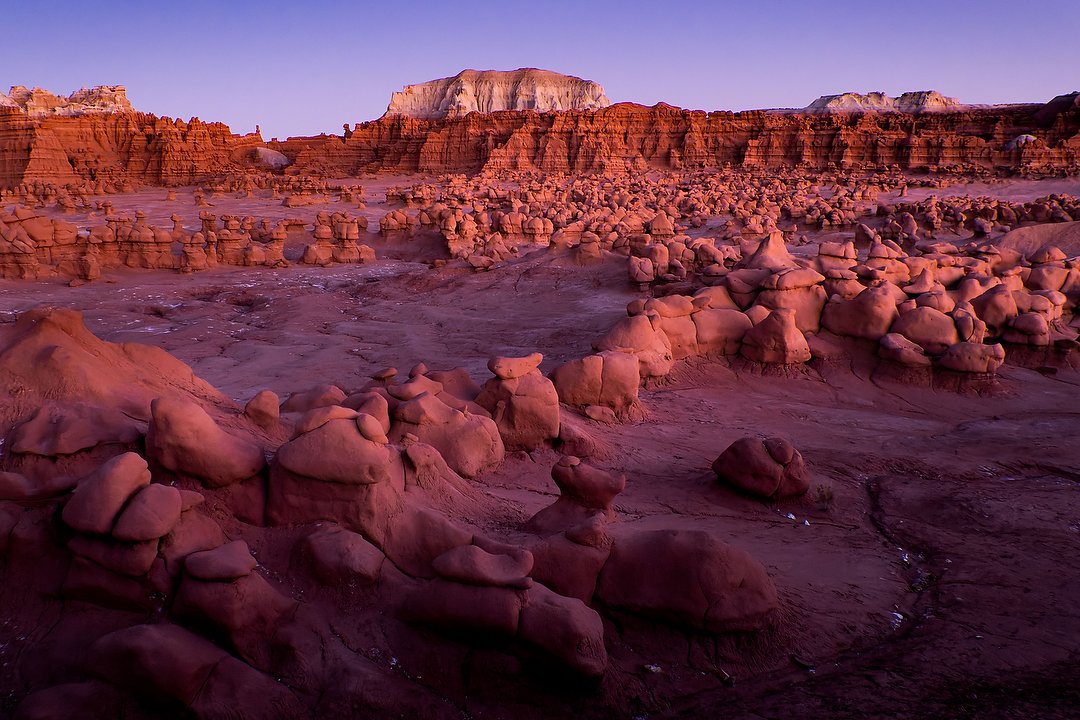
After sunset we stopped shooting to have a picnic dinner. Afterwards, as I was starting to carry lighting gear in for our night shoot, I noticed the beautiful, though dim, afterglow striking the valley. Not having time to set up my tripod, I simply raised the ISO and relied on my camera’s excellent image stabilization. Nikon Z 9, Aperture Priority, Sunny white balance, ISO 8000, 1/8 at f/8 in Matrix metering, -0.3 EV, Nikkor Z 14-30mm f/4 S lens at 30mm.
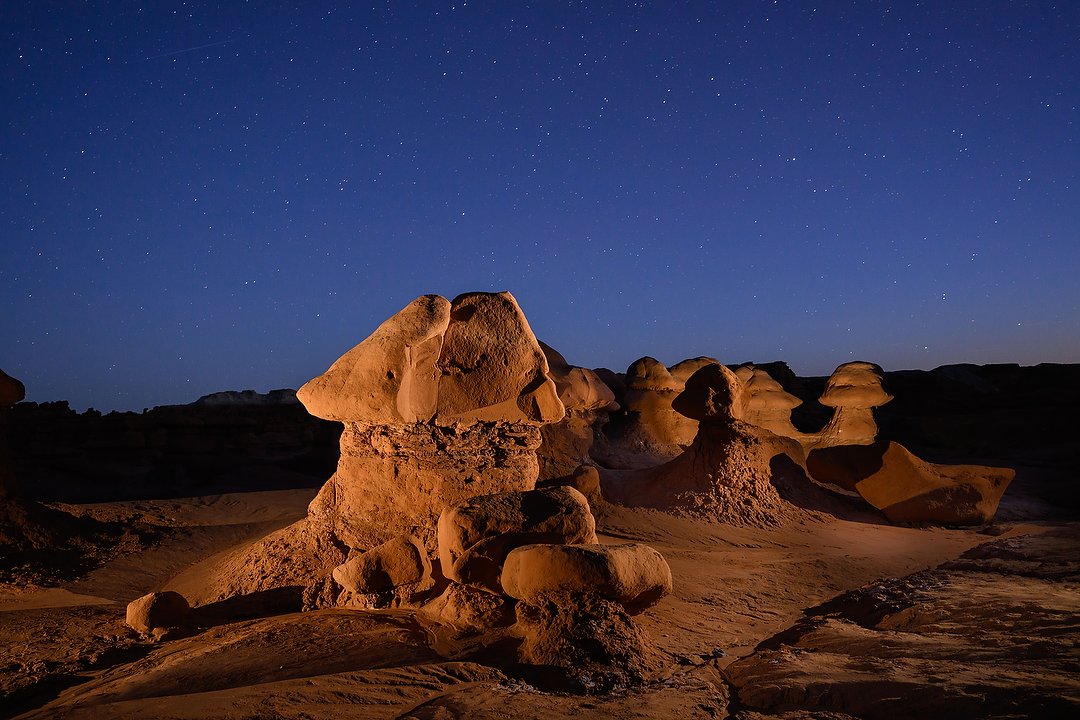
This was the result of our night shoot that evening, at Goblin Valley State Park. I used three Lume Cubes to light the scene for the group. Nikon Z 9, Manual exposure, Sunny white balance, ISO 2000, 20-seconds at f/4.5 in Matrix metering, -0.3 EV, Nikkor Z 14-30mm f/4 S lens at 21mm.
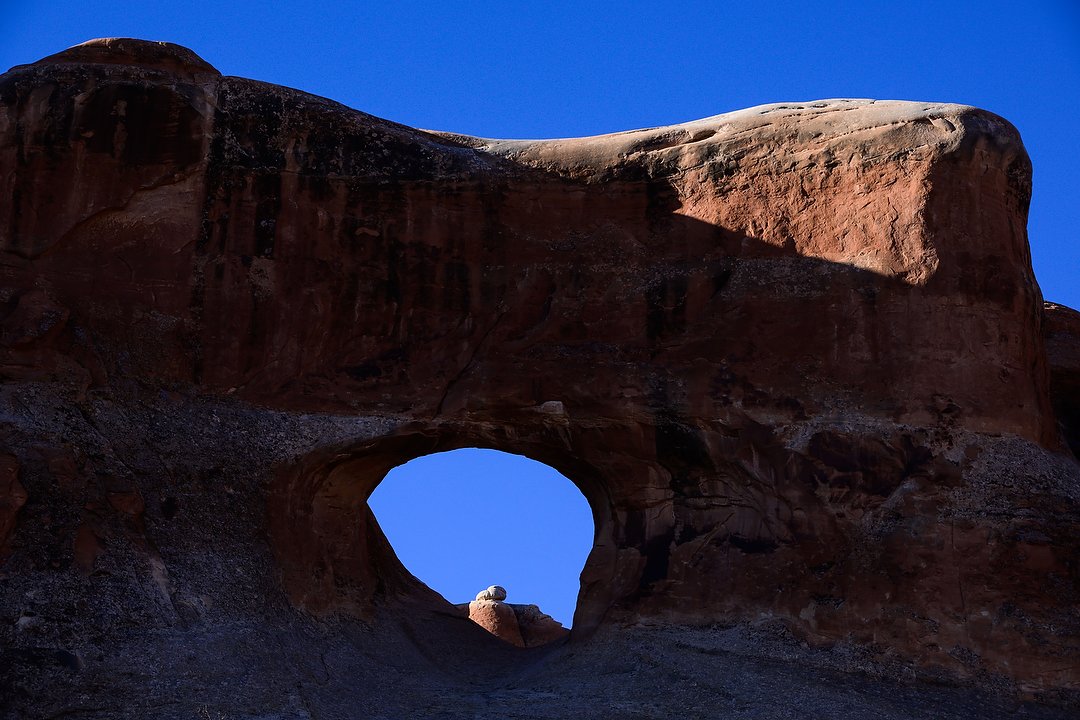
We started the third day of the workshop at Devil’s Garden. Instead of having one “wow” scene, it has lots of lesser, yet still beautiful spots. This is Tunnel Arch, which photographs best when underexposed, bringing the viewer’s eye to the arch and the white boulder framed within it. Nikon Z 9, Aperture Priority, Sunny white balance, ISO 200, 1/250 at f/10 in Matrix metering, -1.7 EV, Nikkor Z 24-200mm f/4-6.3 VR lens at 82mm.
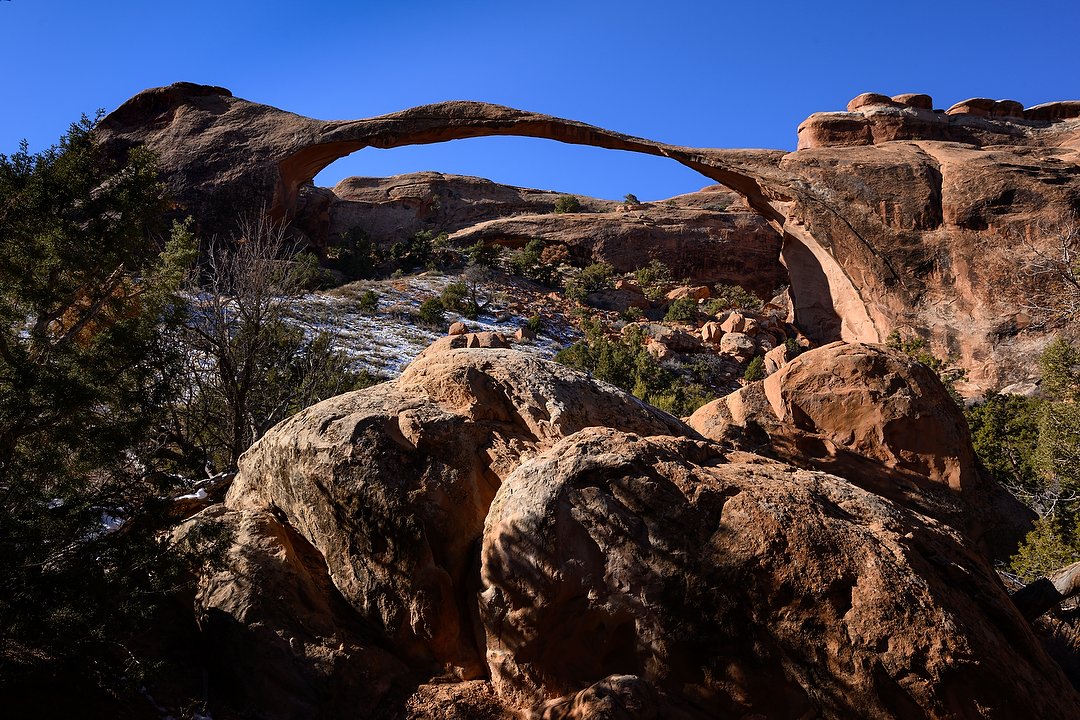
Landscape Arch is also in Devil’s Garden, and the longest arch (over 300-ft) in North America. Tough to photograph because of that length, some nice boulders in the foreground, with hard shadows help make for a more interesting picture. Nikon Z 9, Aperture Priority, Sunny white balance, ISO 100, 1/160 at f/10 in Matrix metering, -1.0 EV, Nikkor Z 14-30mm f/4 S lens at 19mm.
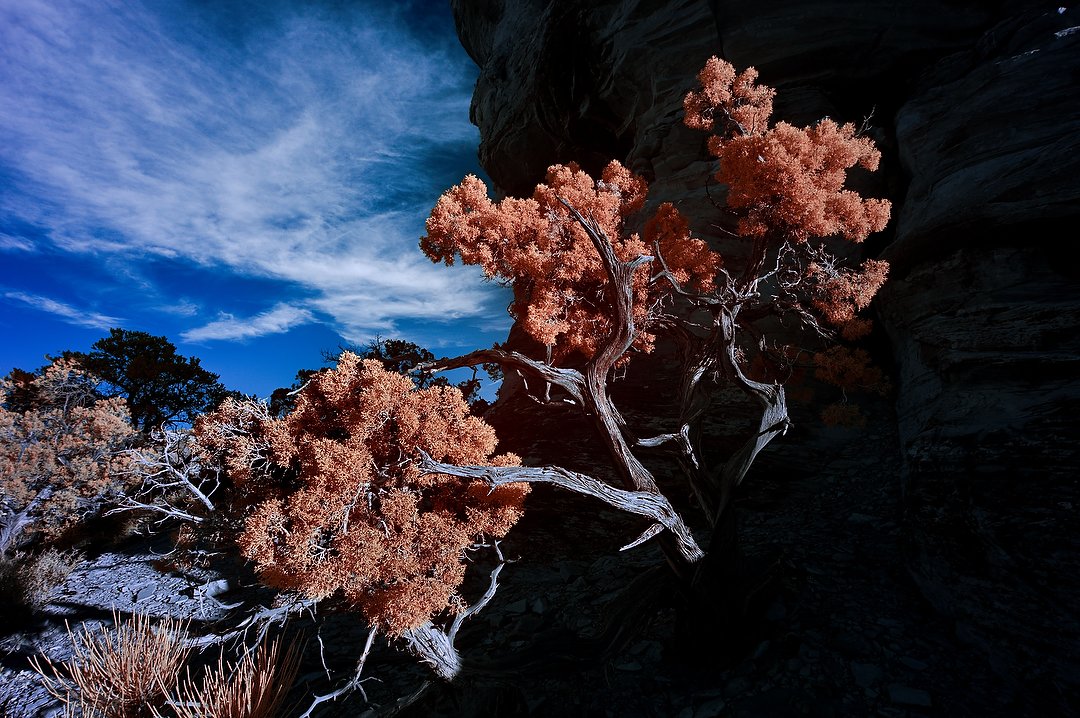
We finished the third day with an afternoon drive down to the Needles District of Canyonlands. Further from Moab and out of the way, it receives fewer visitors, which makes it a great place for photographers. This is a “false-color” infrared image shot with my converted, full-spectrum, Nikon Z 6. Aperture Priority, Preset white balance, ISO 100, 1/160 at f/10 in multi-segment metering, +1.0 EV, Nikkor Z 14-30mm f/4 S lens at 18mm.
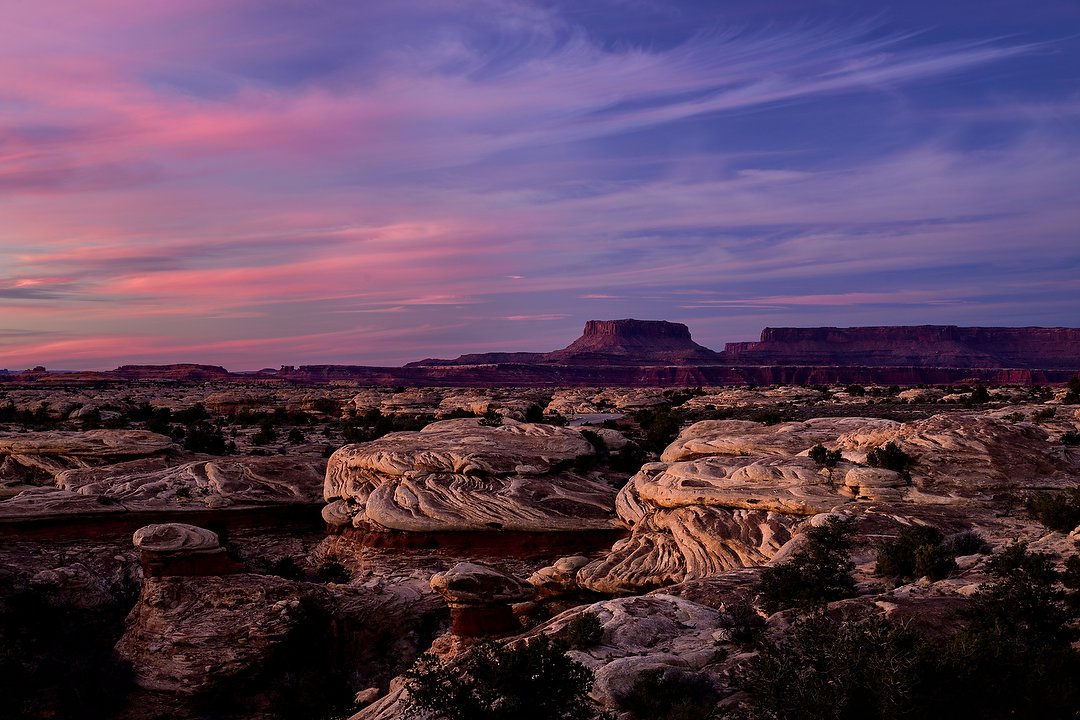
This is one of my favorite sunset locations, also in the Needles District, and right next to where we did that evening’s night shoot. Nikon Z 9, Aperture Priority, Sunny white balance, ISO 125, 1 at f/10 in Matrix metering, -0.3 EV, Nikkor Z 24-200mm f/4-6.3 VR lens at 56mm.
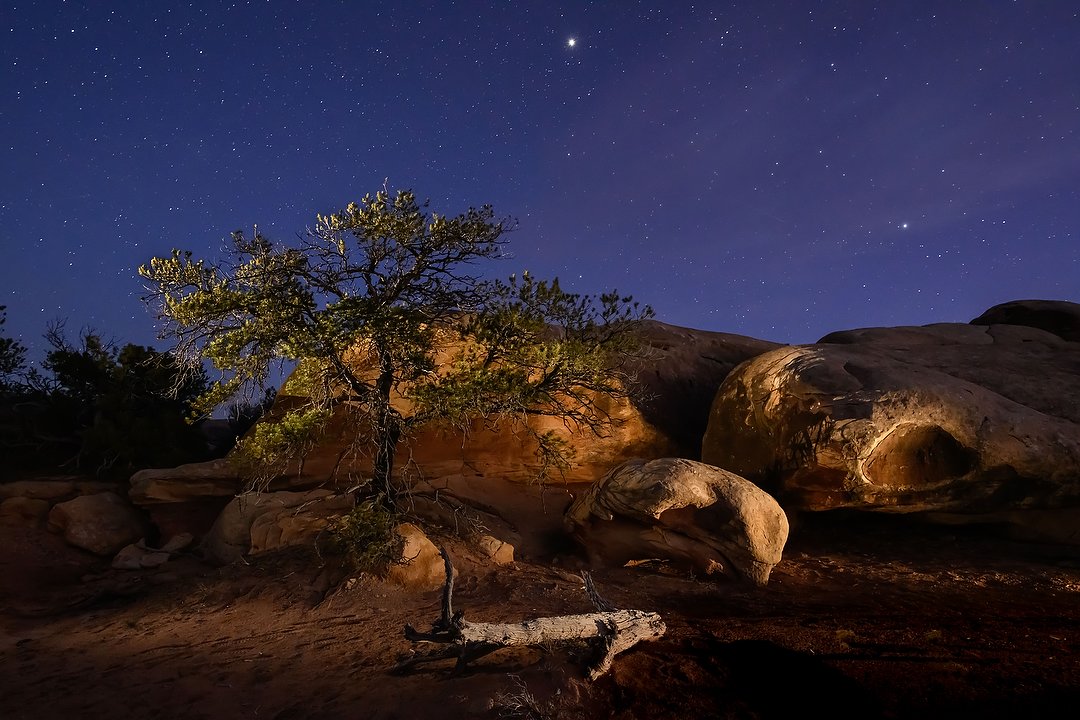
Just a few minutes walk from the previous sunset location, this was our night scene that evening. Lit again with Lume Cubes: one to the left, one to the right and one in back. Nikon Z 9, Manual exposure, Sunny white balance, ISO 6400, 20-seconds at f/5, Nikkor 20mm f/1.8G.
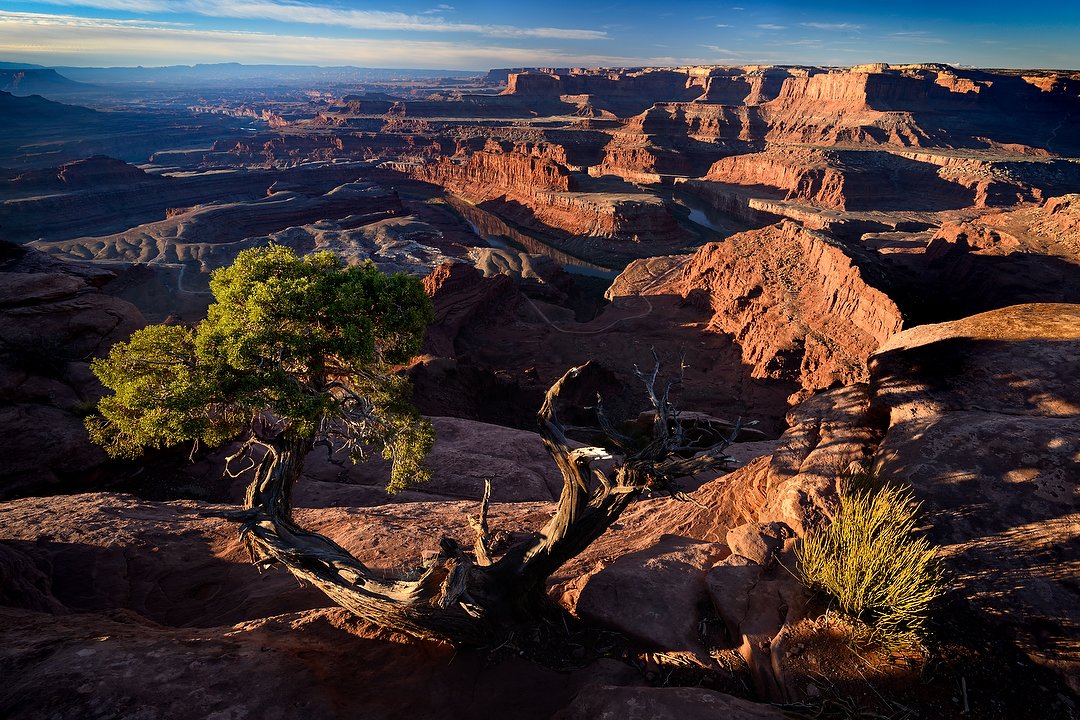
For our fourth and final day, we began with early morning light at Dead Horse Point State Park. The heavy shadows are what add to the drama of this classic scene. Nikon Z 9, Aperture Priority, Sunny white balance, ISO 160, 1/25 at f/11 in Matrix metering, -0.7 EV, Nikkor Z 14-30mm f/4 S lens at 16mm.
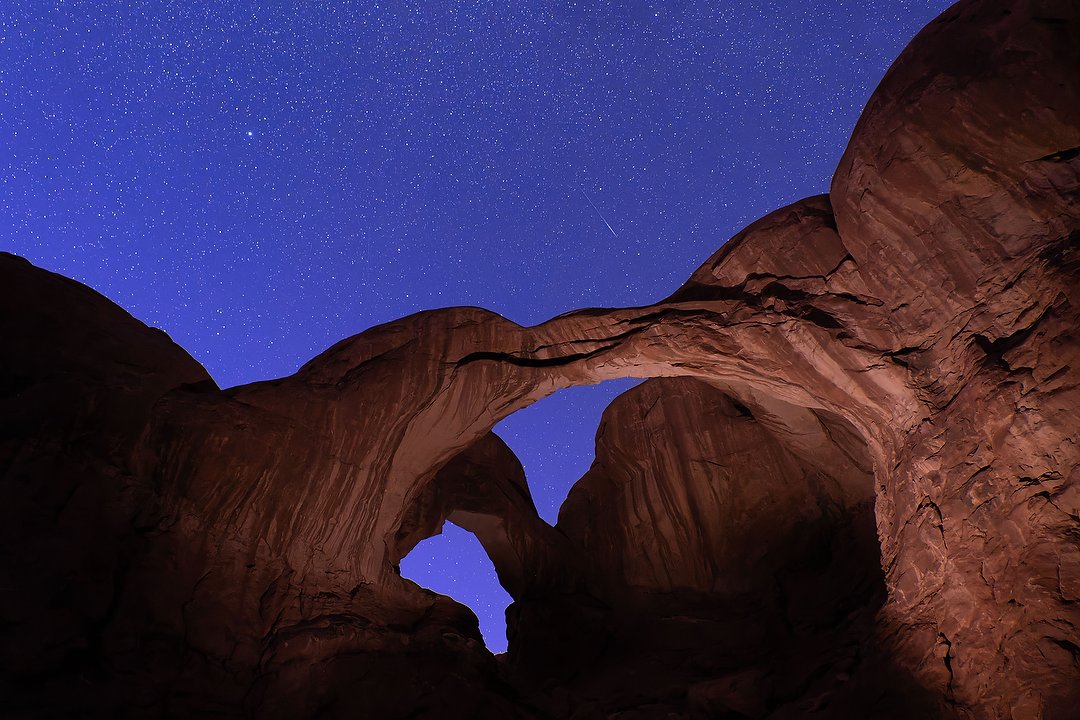
And to close out that last day, we visited Double Arch for our night shoot. This time all I needed was two Lume Cubes, at very low power, adding a slight glow to the rock. A shooting star just above the arch was the icing on the cake. Nikon Z 9, Manual exposure, 3800K white balance, ISO 12,800, 15-seconds at f/4, Nikkor Z 14-30mm f/4 S lens at 20mm.
If you’re interested in joining me on this trip in November of 2023, doing both day and night photogrraphy, drop me a note. I’ll then let you know when I have that trip finalized, usually by late spring.
(If you like this story, please share it with your friends and let them know about the links on photography that I post on my business Facebook page. I’m also on Instagram and Twitter, @reedhoffmann. And if you’re curious about the workshops I teach, you can find them here. And, you can subscribe to this blog on my home page.)

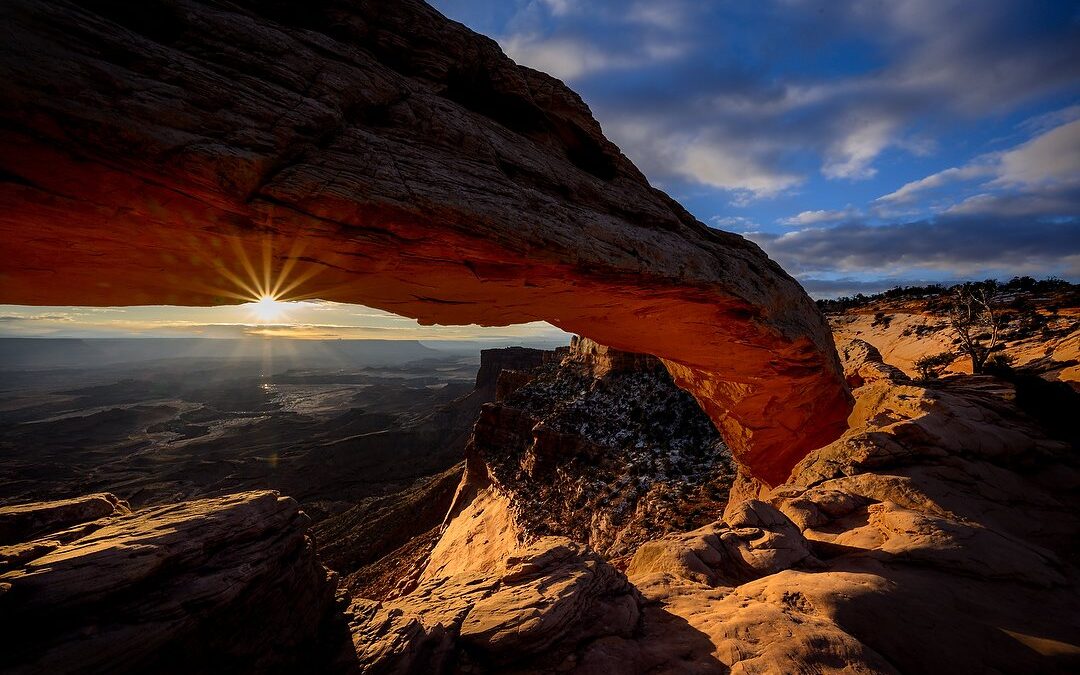
Great shots, story and a great workshop!